All businesses use metrics and key performance indicators (KPIs) to track performance, risk and growth opportunities, and overall business health. But depending on the industry, certain metrics are more important than others to track.
For instance, SaaS companies, due to their nature as subscription-based businesses, should track a handful of metrics that will serve as real-time indicators of health and growth. These metrics include, but are not limited to:- Customer acquisition cost (CAC)
- Customer lifetime value (LTV)
- Churn
- Customer retention
- Monthly recurring revenue
What is LTV:CAC, and why is it important for SaaS businesses to track?
LTV to CAC is a ratio that measures the profitability and long-term viability of a business. Essentially, it compares how much value a customer brings over the course of their relationship with your company (known as their lifetime value or LTV) to the cost of acquiring that customer in the first place (known as your customer acquisition cost or CAC).
Ultimately, LTV:CAC is an indicator of profitability—is the LTV of your customer higher or lower than the marketing and sales costs it took to acquire that customer? For SaaS companies in early stages of growth, that growth is often driven by efficient resource allocation and high customer retention rates. This means that if the wrong customers are targeted or retention rates become unpredictable, SaaS organizations could be missing out on crucial growth opportunities, or worse—profitability and revenue growth could be impacted.
Knowing how to calculate the LTV:CAC ratio is an important skill for SaaS business leaders to master, and can help them make more informed decisions around growth. LTV:CAC allows businesses to easily measure the ROI of their customer acquisition efforts, and identify which strategies are most effective for customer retention. Overall, this metric provides valuable insights into a company’s financial performance and can help leaders identify which areas need optimizing for growth and profitability.
How do you calculate the LTV:CAC ratio?
To calculate the LTV:CAC ratio, you need to divide your LTV by your CAC.
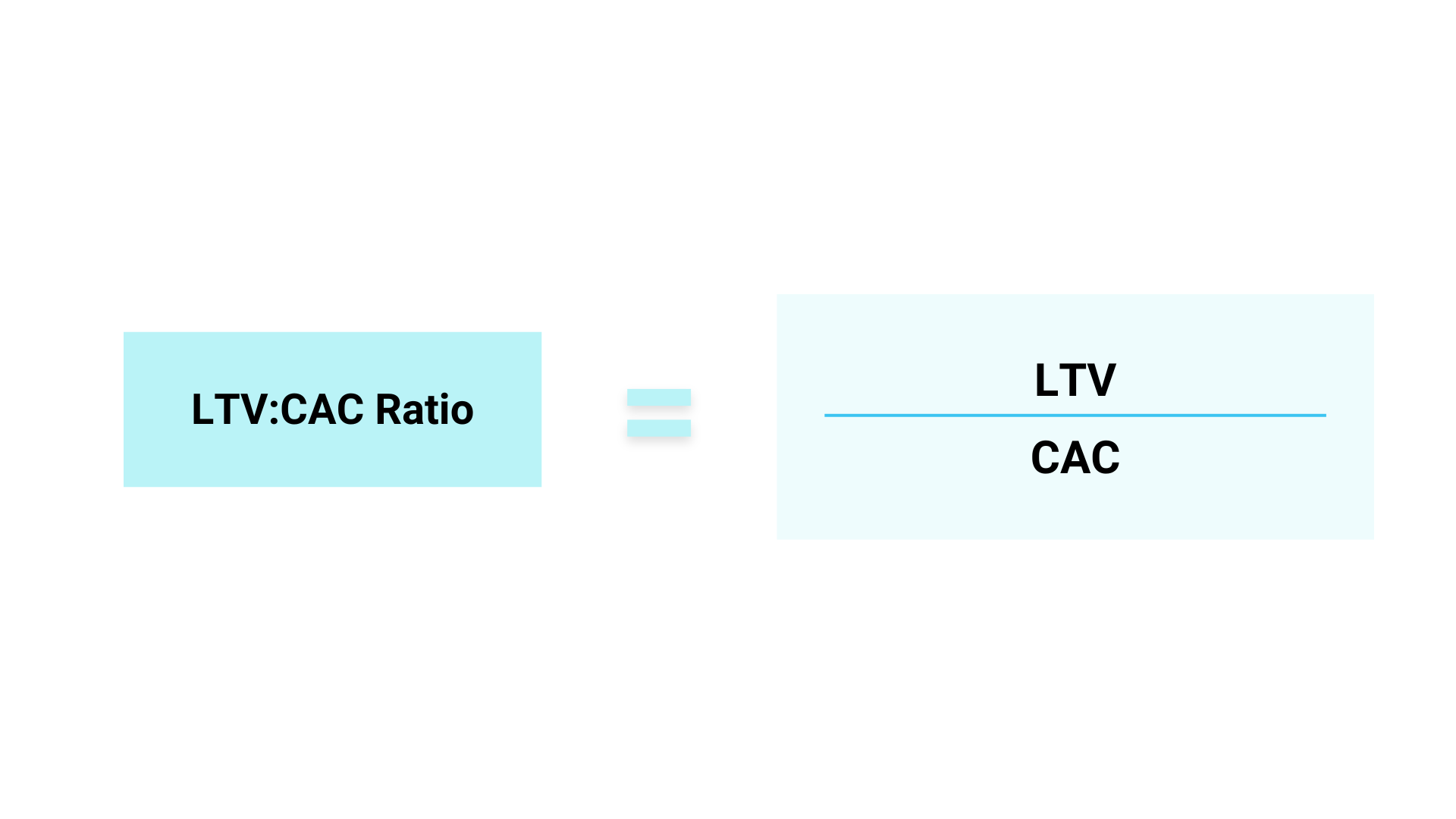
LTV:CAC ratio formula
Simple, right? While the actual ratio requires one simple calculation, determining the individual LTV and CAC values first can be challenging.
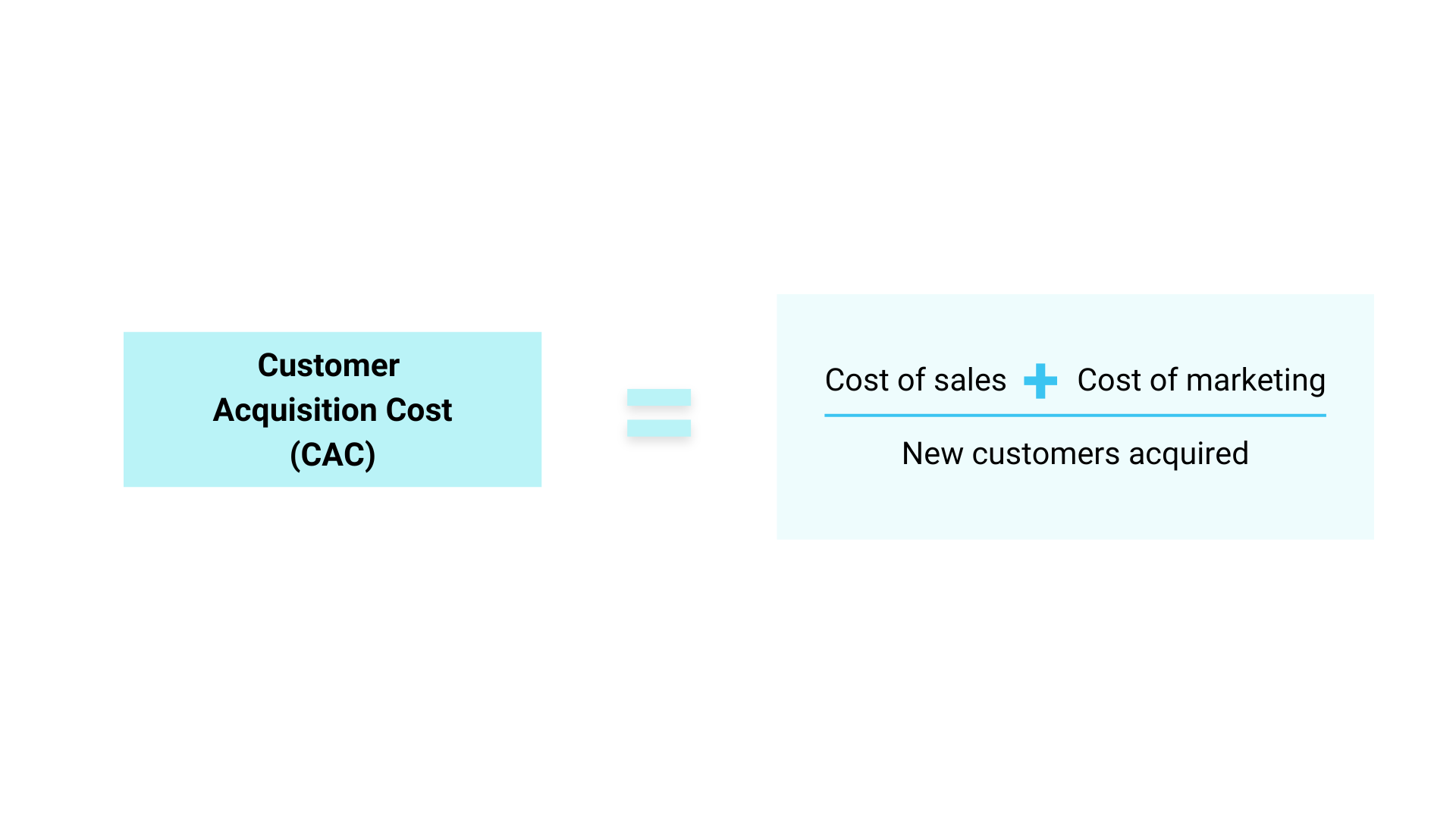
Customer acquisition cost (CAC) formula
To calculate CAC—the denominator in the ratio equation—you must total any acquisition-specific costs in a particular time period, which includes all sales and marketing efforts.
Marketing efforts can include:
- Social media
- SEO and SEM
- PR strategies
- Marketing employee salaries
Sales efforts can include:
- Travel costs including conferences, trade shows, or meals and private meeting costs with customers or prospects
- Sales team salaries
Once you have that total, you’ll need to divide that number by the new customers acquired during that time period.
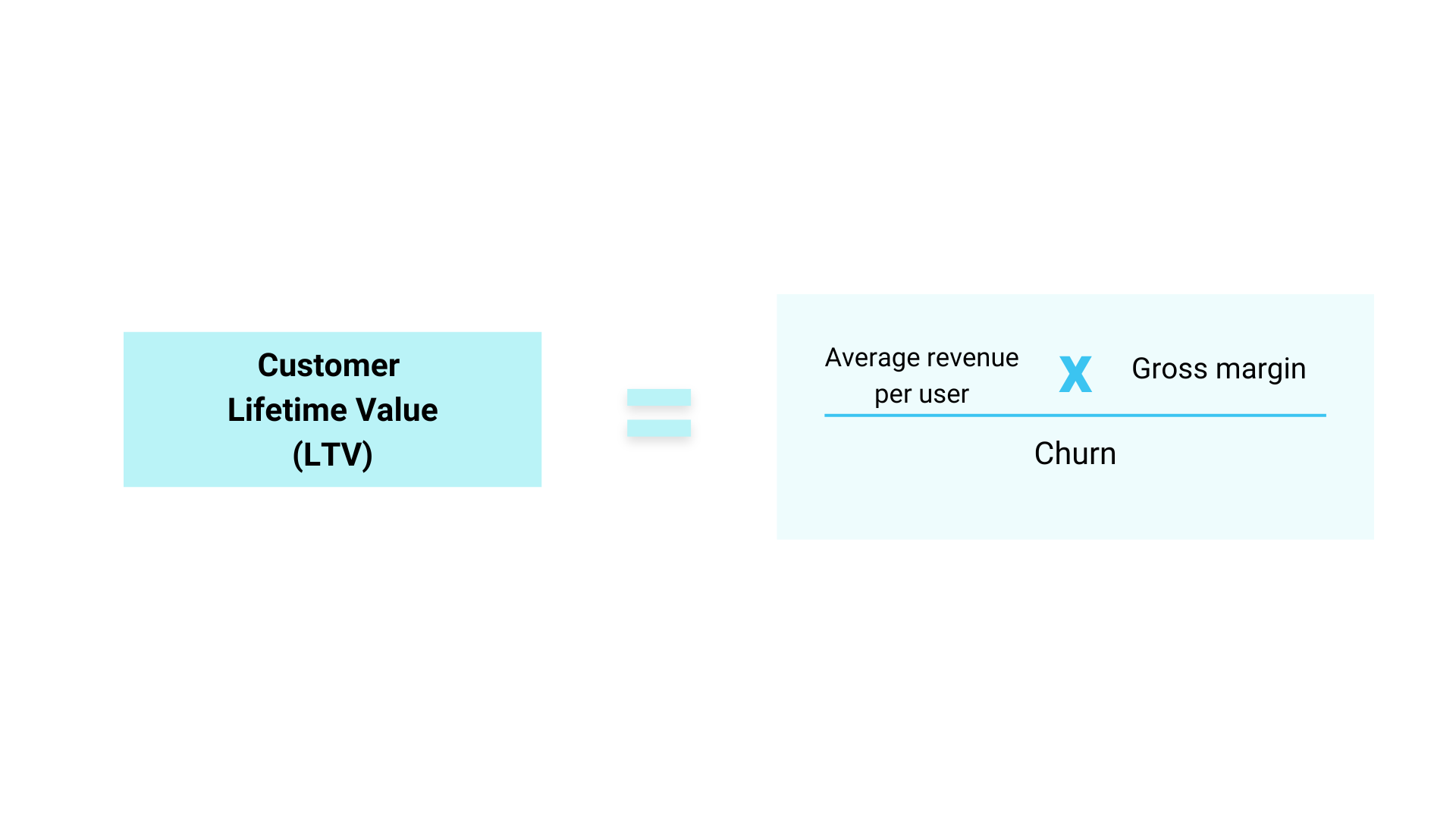
Customer lifetime value formula
The average lifetime value of your customer (LTV) is the average monthly revenue per customer, adjusted for monthly churn and gross margin. To calculate LTV (the numerator in your LTV:CAC ratio), you’ll need to multiply the average revenue per user (ARPU) over a period of time by your gross margin (net sales revenue minus cost of goods sold). Once you have this value, you will divide that number by your churn rate, or the customers that churned leading up to the period of time you’re calculating.
LTV:CAC variations
There are also variations of LTV:CAC that you can take into account when making business decisions. Some examples include:
- LTV on a monthly basis
- LTV based on the number of purchases made
- LTV over time periods such as quarterly or annually
- LTV considering cohorts or groups of customers with similar characteristics (e.g., demographics, interests, buying history)
What is a good LTV:CAC ratio for SaaS?
The standard benchmark for LTV:CAC is 3:1, regardless of industry. This means that a customer will bring in three times what it cost to acquire them. As long as your ratio is above one, your business is likely on track towards profitability. However, when considering LTV:CAC, higher isn’t always better. If the number gets too high, like a 5:1 LTV:CAC ratio, it could be an indication that you’re missing out on major growth opportunities.
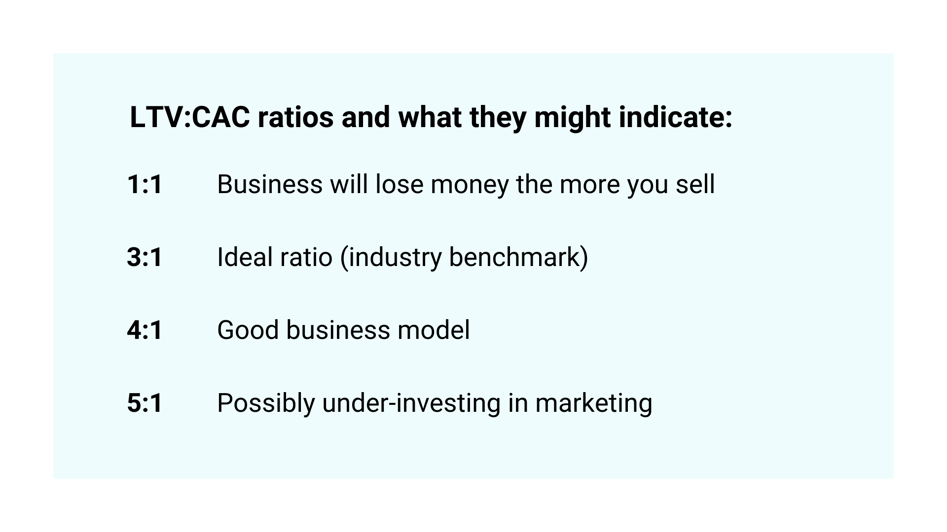
On the flipside, if your LTV:CAC ratio is lower than the standard benchmark, there are a few reasons why this could be occurring. Your customer success team may not be taking advantage of upsell opportunities, leaving money on the table with existing customers.
Churn is also a large factor, especially early on in a customer’s lifecycle. This can happen for a variety of reasons, including a difficult or slow implementation, or features and integrations not meeting customer needs. If your team identifies these challenges as reasons for low LTV:CAC ratios, your sales and marketing teams may need to re-evaluate the product/market fit within your ideal customer profiles, or your product department may need to adjust product development to better align with market demands.
How to leverage LTV:CAC for growth
Because the LTV:CAC ratio is one of the most important indicators for future success, investors often turn to it when determining valuation for SaaS businesses.
For the typical high-performing SaaS business, to ensure the company is set up for long-term growth, the gross profit generated by each customer must be meaningfully higher than the customer’s cost of acquisition. Investors will keep a close eye on the LTV:CAC ratio as an indication of both customer profitability and marketing effectiveness.
So while there are many benefits a good ratio can have for your business, it can also provide a great health check for CEOs and founders planning for future M&A or IPO processes.
Jirav for SaaS
The best way to measure and track your LTV:CAC ratio is with a solution that connects directly to your source systems. It’s crucial that the data you use to calculate LTV and CAC for the ratio equation is as accurate and up-to-date as possible. Just compiling the data for the CAC calculation alone requires looking into your CRM (customer count), HRIS (salaries and other employee-related data), and ERP (advertising spend) systems.
Jirav syncs directly with your systems of record to help eliminate any errors that could occur with manual data entry and reconciliation. It also comes pre-configured with reports, dashboards, and plans specific to SaaS businesses, plus out-of-the-box metrics, KPIs, and charts that will help you track your LTV:CAC ratio in real-time.
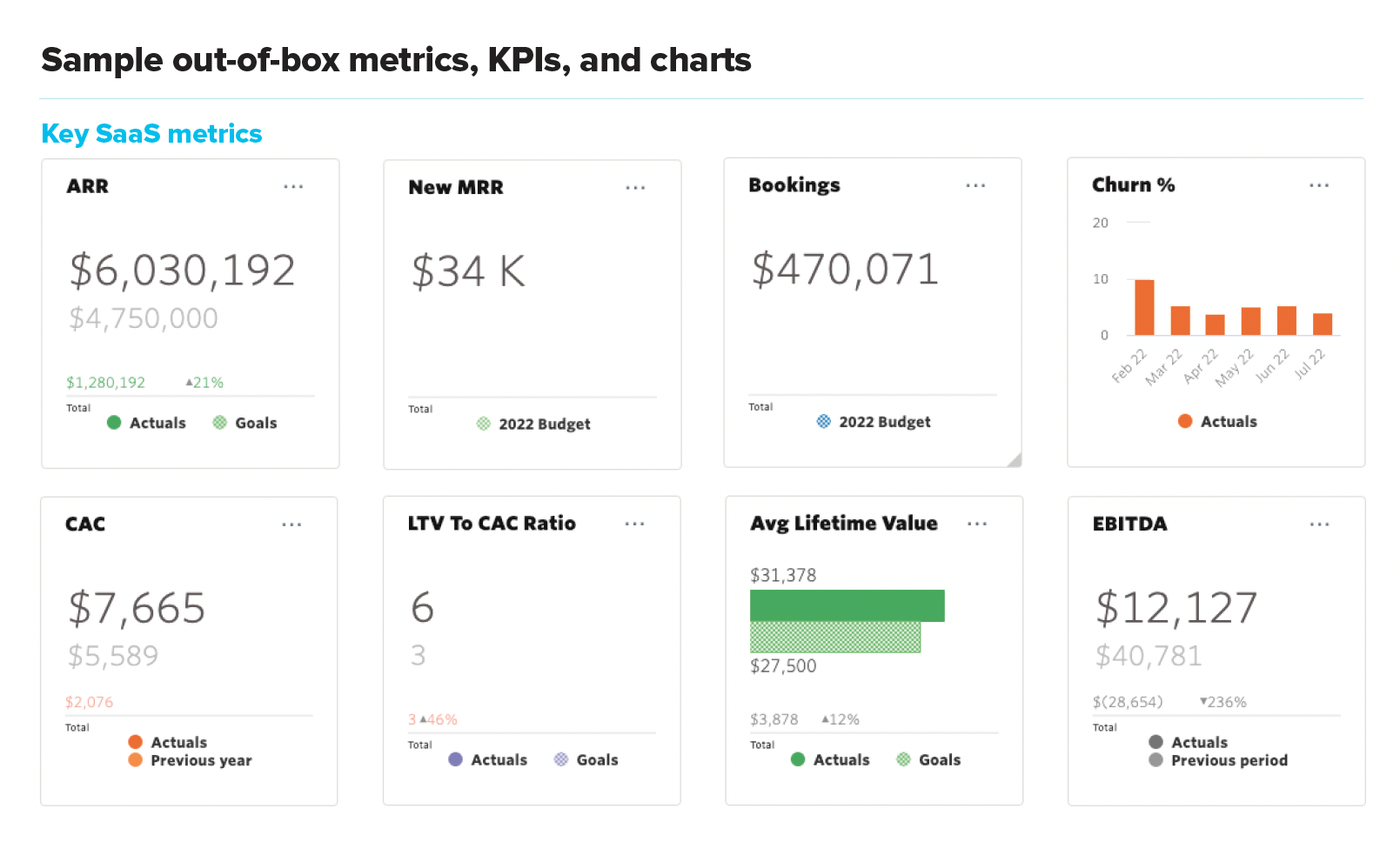
Download our Jirav for SaaS toolkit to learn more about how our solution is tailor-made for SaaS organizations looking to maximize their growth, or start a free trial today to dive in and see how it works for yourself!












